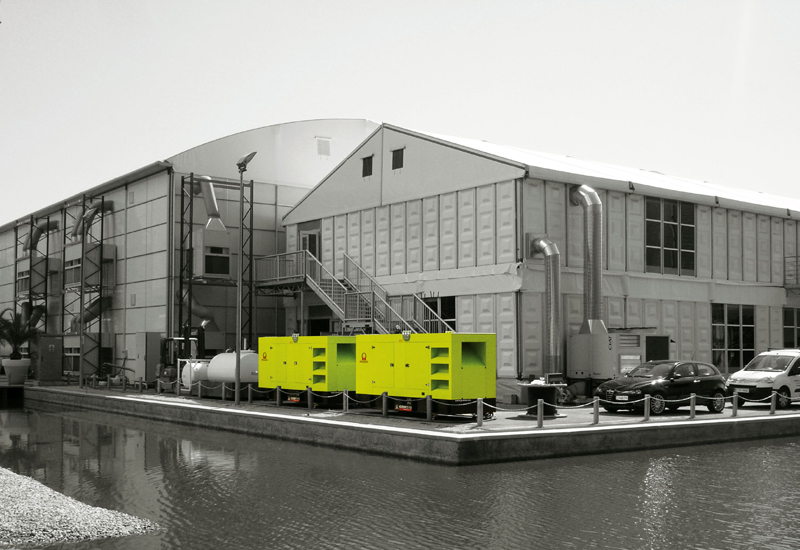
Steve Hallam, Commercial Director at PRAMAC UK, explains why the move from car manufacturers towards an electric future will place increasing demand on the grid and make temporary back-up power even more critical.
Recent attention-grabbing headlines from car makers such as Volvo and VW on the production of electric vehicles has revolutionised the future of the automotive industry. However, it’s anticipated that the rise in electric vehicles on Britain’s roads will put increasing pressure on our existing infrastructure and could see peak electricity demand jump by more than the capacity.
This anticipated surge is also coupled with the growing need and pressure on our existing data network. More and more of us are using cloud- based applications at home and at work, on our desktops and on mobile phones. It is forecast that by 2020 data consumption will rise between 40-60GW* which, of course, means that we’re requiring massive data centers to be built and these will require power too.
The surge in power requirements to support an electric and data infrastructure will put increasing pressure on existing manufacturing, agriculture, homes and businesses. The National Grid has reported that if electric vehicles aren’t charged ‘smartly’, peak demand could be as much as 8GW higher in 2030**.
One key point to note here is that we’re not heading towards an electric Armageddon and advances in alternative energy sources such as Nuclear, along with the rise in renewables such as Solar, will go a long way to providing us with alternative energy sources.
That said, there are simple steps that councils, hospitals, homeowners, construction companies, businesses and data centres can do to ensure that they have on-demand power during mission critical phases.
So, in basic terms, what can we do to stop the lights flickering and keep businesses running?
Demand for temporary back-up power generation is on the rise and this year we’ve seen growth across agriculture, residential and healthcare as more end-users realise the potential that back-up power presents in meeting urgent energy needs.
Temporary back-up power generators offer an independent and reliable power supply which is immediately available.
We’re seeing a greater number of installers becoming involved with tenders for mission-critical applications requiring temporary power for off-grid installations across industrial and residential markets.
A typical contract in this sector could be anything from 60kVA for a small health centre through to 3.2 MW for a data centre.
In North America, we’re witnessing this market boom as significant numbers of private companies and individuals recognise the need to generate their own self-contained power as the growth in technology puts pressure on the national grid.
Residential demand is forecasted to peak in the UK too and we’d anticipate this market will demand single phase units up to 100A. Our smaller 1,500rpm single phase units such as our GBW15Y, 22Y and 230V versions of the GSW30Y (20Kva 100AMP with remote start capability) are proving popular and can be easily installed into residential areas, care homes, doctors/veterinary surgeries, retail units, centres, and light industrial units.
This market generally demands a product that is proven in the field, robust, low noise and fuel efficient.
1. Customer relations and understanding: it’s crucial that installers work with customers to specify the exacting requirements they need, as each will come with their own set of requirements and standards. If you are unsure then work with a power generator manufacturer to help determine the load and power ratios, and, of course, the product which is most fit for purpose. At PRAMAC our team work in synergy with installers and are on hand to offer expert advice and guidance.
2. Soundproofed Zintec plated canopies are essential to reduce noise pollution, particularly in urban areas, whilst the Zintec coating is robust and prevents rust.
3. Remote monitoring: with the rise in internet and cloud based maintenance, look for generators which offer telemetry to help you or your customer remote monitor the health of your generator fleet from the office or car, and determine BMS suitability.
4. Full control panel and shutdown with operating options and supplements-demands change over time so it’s important you have software and hardware that can change with your customers’ demands and puts their safety first.
5. Work with manufacturers who offer full service support, including access to wiring diagrams and installation drawings, full warranty support, OE parts and service direct from the manufacturer, along with delivery to site. This will support you in your tenders for big contracts.
Significant potential
Increasing pressure on our National Grid means that throughout 2017 and beyond, the growth of STOR (Short Term Operating Reserve) projects creates significant potential for contractors and installers.
For larger scale installations such as this, it becomes more complex and it’s important that electrical installers work alongside the developers, construction companies, and power generator manufacturers to specify demands from the outset.
In a data center environment, for example, the IT and Operational Directors will play a hands-on role to specify the exacting requirements this discerning market demands and installers are expected to be on hand 24/7 for service and maintenance. Before embarking on this type of project it’s essential that you have the right resource and network to support.
Often these projects require customised solutions and working alongside a manufacturer will enable you to have access to bespoke builds, technology, engine types and power node ranges to ensure you have the right solution and not an off-the-shelf (near enough) package.
Many customers will weigh-up the advantages of having temporary back-up power as often the initial outlay and Capex can be significant. But end-users need to consider what the cost would be if the mains did fail and we were left without power. Homes, businesses and livelihoods could be put at risk.
Temporary back-up power offers resilience against unforeseen disaster recovery circumstances but also means that we can proactively manage our own power needs.
Key resources
*http://annualreport2015.e.abb.com/businessoverview/chairman-and-ceo-letter
**https://www.theguardian.com/business/2017/jul/13/electric-car-boom-power-demand-national-grid-hinkley-point-c
